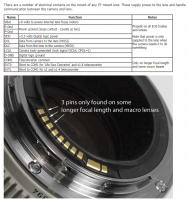I think you are pretty safe to click that buy button. These changes take years and the equipment you have today doesn’t stop working when a new product comes out. If the concern is over supportability, look at what canon covers on their cps page for repairs. They still have the 5d Mark II there and many old lenses.
In general, Canon Service supports discontinued products for about seven years from the time they were officially discontinued. The EOS 5D Mark II was replaced by the EOS 5D Mark III in March 2012, but the 5D Mark II was not officially discontinued until December 2012. I would be very surprised if the 5D Mark II is still supported after the beginning of 2020.
Look at the EF 70-200mm f/2.8L series. The EF 70-200mm f/2.8L IS was replaced by the EF 70-200mm f/2.8L IS II in March of 2010. The EF 70-200mm f/2.8L (non-IS) hasn't been on the CPS service list since 2017. The EF 70-200mm f/2.8L (non-IS), introduced in 1995 but sold new until a few years ago is no longer on the CPS repair list, and it does not seem to have ever been officially announced as discontinued. As early as 2013 some owners of the older lens reported Canon said they were out of certain needed spare parts to repair that particular lens. At that time, many authorized Canon dealers still had new copies of the EF 70-200mm f/2.8L (non-IS) in stock and for sale. (When Canon officially discontinues a product, they only allow dealers a short time period to sell remaining stock or return it to Canon.)
My assessment is based on my own experience using the two side by side in real world shooting. I was able to get publishable images for indoor sports using the 7DII at 6400. When compared side by side with the 5DIII, the two were very similar, with the very slightly better noise of the 5DIII offset by the many sports-oriented feature advantages of the 7DII.
In addition, the quality of the noise from the 7DII was much more pleasing and filmlike, than previous generation of the APS-C sensors. I didn't like shooting the original 7D at anything above 800 because of the noise, which in my opinion, had a very electronic look to it, while the 7DII noise looks to me more like the grain of 35mm film.
Ultimately, I moved to the 1DX II, which has all the usage advantages of the 7DII and better high ISO performance than either body. I find the high ISO performance of the 5DIV to be comparable to the 1Dx II. The files coming from both are much easier to post-process than earlier generations.
Different people get different results. Shooting style and post processing can have a lot to do with that. I have seen some high ISO images shot with the 7DII posted to this site that are stunning.
There are a couple of small newspapers whose photogs I know that use 7D Mark IIs as their primary "long" body when shooting high school sports. The advantages of "flicker reduction" make it a no brainer compared to the 5D Mark III, which does not have the feature and which some of them use for other assignments and as a "wide" body for sports. Buying the 7D2 instead of a 5D4 or 1D X Mark II (which do offer 'flicker reduction') also allows 70-200mm f/2.8 lenses to have the same reach as 300mm f/2.8 lenses do on FF bodies with similar total MP. The price difference between a 1D X (even used) plus a 300/2.8 (even used) and a 7D2 plus 70-200/2.8 is enough for a small paper to pay a freelancer to shoot an entire high school football season and keep the (yes, "the" as in "the only") full time staff photog out of overtime for 10-12 consecutive weeks. Maybe the economics are different in larger/different markets.
Since the shutter release is timed at the peak of the lights' cycle, not only do you get more consistent color and exposure from shot-to-shot, you also get
brighter exposure than if you set the camera for the average between the peak and the trough of the lights. In stadiums where I was shooting ISO 3200, f/2.8, 1/500-1/640 with the 7D or 5D3, the 7D2 allows me to use ISO 3200, f/2.8, 1/800 or 1/1000 and get the same brightness. That's 2/3 of a stop faster without the photos getting any darker! No more "brown out" frames! No more frames with jerseys from the same team two different colors on opposite sides of the frame (not to mention the grass)!
Mid-level and above colleges and most pro venues have lights that don't flicker or are set up with each bank containing equal numbers of lights on each phase of the AC supplying the power. But at smaller colleges and high schools, the difference between the darkest and brightest frames due to the effect of flicker from AC lights is greater than the difference between FF and APS-C in non-flickering light. It's often about two stops from peak to trough, and the peak is also much fuller spectrum than the trough.
You stated that a lower battery capacity results in slower AF. That's factually incorrect. Period.
Chuck Westfall went on record a number of times stating that cameras that could supply higher power will AF faster with the same lens. The models he specifically mentioned included both 1-series bodies with higher voltage batteries
and other models (such as the 7D and 7D2) with 7.4V LP-E6 batteries.
Apparently Canon uses power control technology which allows some cameras to supply more power (i.e. work over time) momentarily when needed for fast AF than they allow other cameras that use smaller capacity 7.4V batteries. Based on Canon's emphasis on the overall user experience and consistency in performance over varying conditions, one might guess that they limit the cameras using lower capacity 7.4V batteries to preserve battery life performance.
Fair enough. The choice of RAW converter and noise reduction can make a huge difference. I found that DxO PL was particularly good on the 7DII and now the 5DSR.
Many of those I know who shoot high school sports are going straight to JPEG in camera, because their deadline for the next day's edition is usually only a few minutes after the game will be expected to end. Most newspaper folks I know only shoot the first half of Friday night football games and have already submitted their photos and are home by the end of the game. If they're covering two different games in the same area they'll shoot the first 8-10 minutes of the first quarter at one (high school football has four 12 minute quarters) and then go to the other game and shoot until halftime. Those shooting for yearbook/sports stock agencies tend to stay the whole game, but the sheer number of frames they shoot (they're generally covering different teams each week and need as many shots per game as they can get of any specific team) means most of those guys also shoot straight to JPEG.
Power is defined as work per unit time. Work is power x time.
If:
power = work/time
and
work = power * time
Then:
power = (power * time)/time
which can be reduced to:
power = power
That seems like a fairly circular argument to me.











